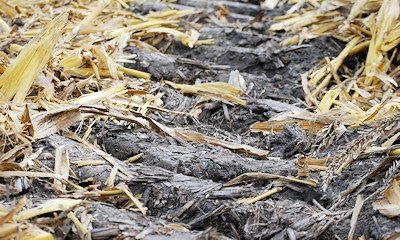
Dennis Bowman, University of Illinois extension educator, says soil compaction comes down to two factors: timing and soil moisture. “The real threat in the fall is a wet harvest,” he says. “We get into the fall rush, the feeling you have to move the combines and grain carts regardless of conditions, and we really have to think hard about how much damage we’re going to do and whether it’s worth it?”
Bowman says if the crop is standing well and stalks are in good condition, waiting for wet soils to dry is beneficial in the long run.
Entering fields at the right time is only one harvest time precaution.

COMPACTION FACTORS: Dennis Bowman, University of Illinois extension educator, says compaction comes down to two factors: moisture and timing.
“Controlling traffic in the field and keeping in-field traffic activities to a minimum is also key,” Bowman says. Lance Tarochione, Asgrow and DeKalb technical agronomist, agrees, “Anything you can do to minimize unnecessary traffic across the field at any time, with anything, is a good thing from a compaction standpoint.”
Tarochione recommends minimizing the number of acres covered with a grain cart and confining heavy traffic areas. “Most of the damage from compaction occurs from the first pass,” he explains. “If you drive the grain cart 10 times in the same spot, 80% of the damage was done on the first pass, so the other 9 passes really don’t make it worse.”
Fall compaction can be a challenge; especially in field conditions that are too wet. However, Tarochione says the winter freeze and thaw will alleviate most of the fall compaction damage. “I think the compaction we create in the spring with tillage passes, planter passes, sprayer passes, is probably a lot more detrimental to the crop than fall compaction,” he explains.
“We’ve done a great job alleviating compaction in the fall, but we go out in the spring and put a lot of shallow compaction back in,” Tarochione says. “If you work the ground a little too wet or a little too much, or have too much downforce on your planter, or spray when it’s too wet, we put all the compaction right back in.”
“You can mess things up regardless of the time of year if it’s too wet,” Bowman says. “It comes down to your choice of when you enter the field.”
No matter what the calendar says, September 1 or April 1, experts recommend keeping trips across the field to a minimum, minimizing traveled acres and keeping out of wet fields as Mother Nature allows.
About the Author(s)
You May Also Like




